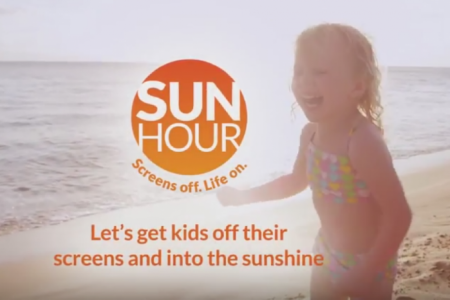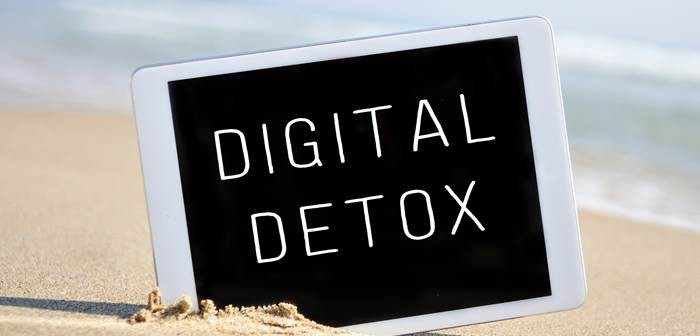We all know what it means to be Tee-Total, when you rid yourself of booze for life, or for a month… or a week… or for however long you can stand it, to help your purse strings, your health, or perhaps your dignity. However, we are less familiar with what it means to be Tech-Total. This is a way of life that similarly tries to undo an overindulgence. Except this isn’t too many glasses of champagne at a friend’s wedding, this is too many likes, retweets and snapchats that mean you miss the wedding altogether.
After losing my smartphone for the fourth time, I’ve taken a while to get back on the digital bandwagon. I’d love to say my disconnection is a noble stance against the perils of technology, but it’s simply a case of not getting things done. For now, an old (simless) iPhone4 supplies me with the apps I couldn’t bring myself to lose (albeit limited to WiFi) and a Samsung B110 is my actual phone. The battery life is its only saving grace. So after watching my friends order Ubers, walk around with Google Maps, avoid train delays and WhatsApp each other, I find it hard to believe that people are actively choosing to live this way.
A recent study by Ofcom revealed that one in three adult internet users (34%), equivalent to 15 million people in the UK, has sought a period of time offline. Of these Tech-Totalers, 25% spent up to a day internet-free, 20% took up to a week off and 5% went web-free for up to a whole month. While I can bet that most of you won’t be choosing to drop off the grid anytime soon, chances are you’ve thought about how much device-time you’re spending. As our own Future of Generations research found, 41% of 20-30-year-olds feel addicted to their device and 40% feel technology is overstimulating people’s brains.
Technology is an undeniable connective and an enabling supplement to our lives, yet, on the other hand, it is disruptive, distracting and demanding. To have resonance, it is important for brands to help people harness the right tech/life balance, getting them closer to feeling ‘in the moment’ without adding to connection-fatigue. Future Laboratory research states that 72% of millennials are spending more on experiences than physical things and the growing focus on creating real-world experiences is increasing. We see a plethora of brands and products jumping on this trend, some by offering real-world experiences and activities, others by making online experiences more conducive to offline ones (binaural sound, 360° video, VR).
 This November, the Australian food and drink brand Golden Circle will launch an app that switches off children’s phones in an effort to get them playing outdoors. Parents can use the app to increase the amount of ‘Sun Hours’ their children get, as an alternative the screen hours they would usually have.
This November, the Australian food and drink brand Golden Circle will launch an app that switches off children’s phones in an effort to get them playing outdoors. Parents can use the app to increase the amount of ‘Sun Hours’ their children get, as an alternative the screen hours they would usually have.
Meanwhile, Brewery Company has opened a teeny tiny bar (measuring just 8f by 6ft) in North Greenwich, where punters are asked to hand their mobile over as they drink in reward for freebies.
Brands need to make content that leaves users feeling like they have benefited from their online time, creating meaningful stories that add to a person’s understanding of a brand, so that they feel part of the story rather than apart from it. More and more consumers want to feel they are not simple voyeurs to the worlds of their favourite brands, but active participants in them. Giving content experiential weight adds to this and increases the likelihood of striking an emotional chord with consumers.
 Virgin Atlantic has teamed up with TripAdvisor to create an immersive online campaign. Viewers are given a third-person, 360° perspective through popular destinations, and can choose which part of the video/area they focus on. The creative visual is based on reviews from the UK’s most popular reviewers, meaning the campaign also successfully taps into the review-and-buy trend. This is a good example of how interactivity can help consumers feel involved, and how technology can embed the user in the brand, rather than alienate them.
Virgin Atlantic has teamed up with TripAdvisor to create an immersive online campaign. Viewers are given a third-person, 360° perspective through popular destinations, and can choose which part of the video/area they focus on. The creative visual is based on reviews from the UK’s most popular reviewers, meaning the campaign also successfully taps into the review-and-buy trend. This is a good example of how interactivity can help consumers feel involved, and how technology can embed the user in the brand, rather than alienate them.
Lucozade Sport launched their Made to Move Campaign this month, providing workout sessions that are streamed online to those wanting to take part (available to anyone with an internet connection). This strikes a nice balance between technology and experience, where the technology is not snatching time away from users, but offering them a chance to use it positively and actively for themselves.
 Cornetto’s ‘Beyond the Screen’ Campaign saw the world’s first binaural pop-up, immersing viewers in a live show that offered interactive performance and 3D Sound. It went on to win best Experiential Creative Execution at the 2016 Institution of Promotional Marketing Awards.
Cornetto’s ‘Beyond the Screen’ Campaign saw the world’s first binaural pop-up, immersing viewers in a live show that offered interactive performance and 3D Sound. It went on to win best Experiential Creative Execution at the 2016 Institution of Promotional Marketing Awards.
Devices offer a world of dizzying choice, but the choice to be part of that world feels increasingly out of our hands. For the consumer, disconnecting, or ‘opting out’ can give back a sense of freedom and control. If brands and products engage with people via non-digital pathways, they can potentially build on this sense of empowerment.
Our concern for tech overindulgence, like that of any overindulgence, is not new, yet reducing the amount we consume will be ever more valuable in our culture of self-betterment, where optimal physical and mental wellness is sought after.
As for being Tech-Total, I get it, I do…but it won’t stop me buying a smartphone next week.



